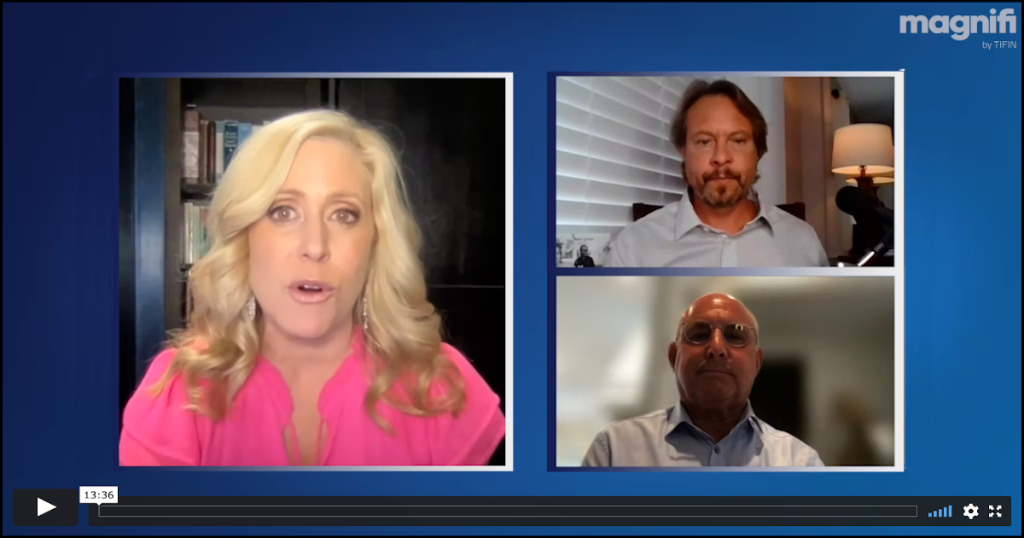Are we headed into a period of stagflation? How will the Fed raise rates and taper this inflationary pressure? These are big questions with complex answers.
Kevin Simpson, founder and CIO of Capital Wealth Planning, and Gary Kaminsky, former Vice Chairman at Morgan Stanley, sit down with Melissa Frances to discuss the Fed, interest rates, and inflation.
Watch the Full Interview at Magnifi by TIFIN
Melissa Francis
Welcome back to Magnifi by TIFIN. Today, we are talking about oil, China, inflation, the Fed, and the best strategy is to incorporate all of that into a portfolio to grow and preserve your wealth. Joining me now is Kevin Simpson, founder and CIO of Capital Wealth Planning and Gary Kaminsky, former Vice Chairman at Morgan Stanley, former Capital Markets Editor at CNBC. Gary is also an investor and a board member at TIFIN. Welcome to both of you. Let me start with you, Kevin. I don't know if you just heard Jeffrey Gundlach, he had a lot to say. Some of it was a little frightening. He was talking about the idea that we are heading into an era of stagflation. And he's not alone in that, but he does think that the Fed will continue to be very aggressive as that goes on. And even as we head into a recession, he thinks that they'll continue to raise rates and stay disciplined. Do you agree with that? Continue reading "How to Hedge Against Inflation"

